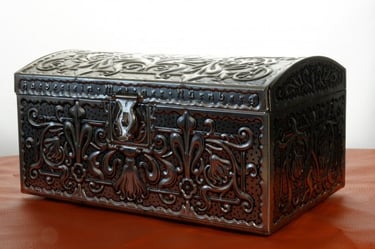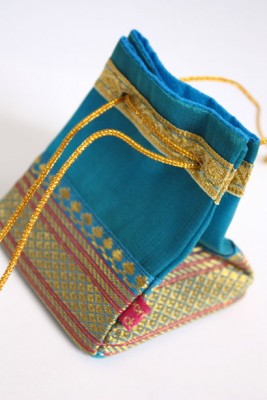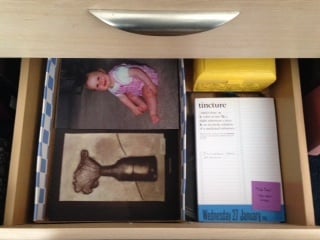Containers come in many shapes, styles, colors, patterns and textures. Some are functional, some are fashionable and some strive to be both. Large, small, lidded, open, clear, colored, round, square, rectangular....the choices can be overwhelming. And, if you've put your containers to the test using the chart from last week, you probably have a better idea of what works for you and what doesn't.
Despite their variation in appearance, all containers have just three components: form, function and style. Form refers to the size, shape and physical attributes of a container, including features such as lids and sections. Function is exactly what it sounds like - the purpose the container will serve once you get it home. A container’s style comes from its aesthetics - color, texture, pattern, attractiveness.
All of these attributes matter. How much each one matters depends on what needs to go into the container and -- you guessed it -- the personal and organizational styles of the person using it. Your mission will be to try to find containers that will help you to create systems that are both appealing and functional so that they’re easy and fun to use and maintain.
 pixabay.com
pixabay.com
I love stuff
If you're an I love stuff organizer, the key to containing your belongings lies in corralling both collections and odds and ends. I love stuff organizers may see the containers themselves as collectibles, or as ways to house or display items of importance -- or perhaps both. This tendency to collect things usually means the more you like a container, the more likely you are to use it. For those with an I love stuff personal style, style and form tend to trump function.
I love stuff folks often prefer open storage and unique containers that allow them to see what they have. But, since too much visibility can turn into visual clutter (think about the difference between one sheet of paper on a desk and haphazard piles of papers), it’s important to strike a balance between what’s gets displayed and what gets put away.
 publicdomainpictures.net
publicdomainpictures.net
I love to be busy
Time is at a premium for the I love to be busy person, which means the best containers are those that require as few steps as possible. If you're an I love to be busy person, you may benefit from subdivided containers that allow you to see at a glance what’s missing as you hurry from one activity to another. Function is the key attribute for the I love to be busy person because a container that doesn't function well wreaks havoc on a busy schedule.
Separate storage for each activity (e.g. a separate bin or bag) can also be helpful because this prevents items that are needed for one activity from getting mixed in with materials for something else. Like their I love stuff counterparts, I love to be busy people may also like clear, color-coded or labeled containers that help them keep track of the minutiae of their varied pursuits. And, depending upon their organizational style, they may be able to use each of them with equal facility.
I need to see it
The name says it all! Anything you can do to appeal to the visual will help you if your style is I need to see it. As a general rule, open storage (no lids) is best. Whereas those with other styles can be coerced into putting their belongings into drawers and closets, I need to see it organizers will resist this. For them, the line between visibility and visual chaos is very, very fine. Form is the most important container attribute for the I need to see it personal style. As long as there's a visual element involved, many styles will be functional for this personal style.
 A recent repurposing of a drawer in my office led to a simple subdivision: calendar & file box on the right, papers on the left (atop the repurposed mouse pads).
A recent repurposing of a drawer in my office led to a simple subdivision: calendar & file box on the right, papers on the left (atop the repurposed mouse pads).
I need to see it folks, like their I love stuff counterparts, often enjoy a visually stimulating mix of containers -- colored, patterned, unique -- and this variety can help them remember where they put things, making it easier for them to make the transition from leaving it out to putting it away. Avoid monochromatic color schemes; without visual variety to remind you where you put things, you'll quickly become frustrated and return to leaving everything out where it can be seen.
A word about size
Remember how you used to buy your kids clothes with “room to grow” when they were little? Regardless of your style, you can use the same concept when determining the right size for a container: Choose containers that are the right size for what you currently own, with a little space for future acquisitions.
Today's post focused on the personal styles. For a printable chart that provides an overview of how containers, personal styles and organizational styles work together, click here. If lists are more your style, click here.
About the Author

Lisa Hess
Transplanted Jersey girl Lisa Lawmaster Hess is the author of a blog compilation, three novels, and three non-fiction books, including the award-winning Know Thyself: The Imperfectionist’s Guide to Sorting Your Stuff. A retired elementary school counselor, Lisa is an adjunct professor of psychology at York College of Pennsylvania. She blogs at The Porch Swing Chronicles, Organizing by STYLE, and here at Catholicmom.com. Read all articles by Lisa Hess.


.png?width=1806&height=731&name=CatholicMom_hcfm_logo1_pos_871c_2728c%20(002).png)
Comments